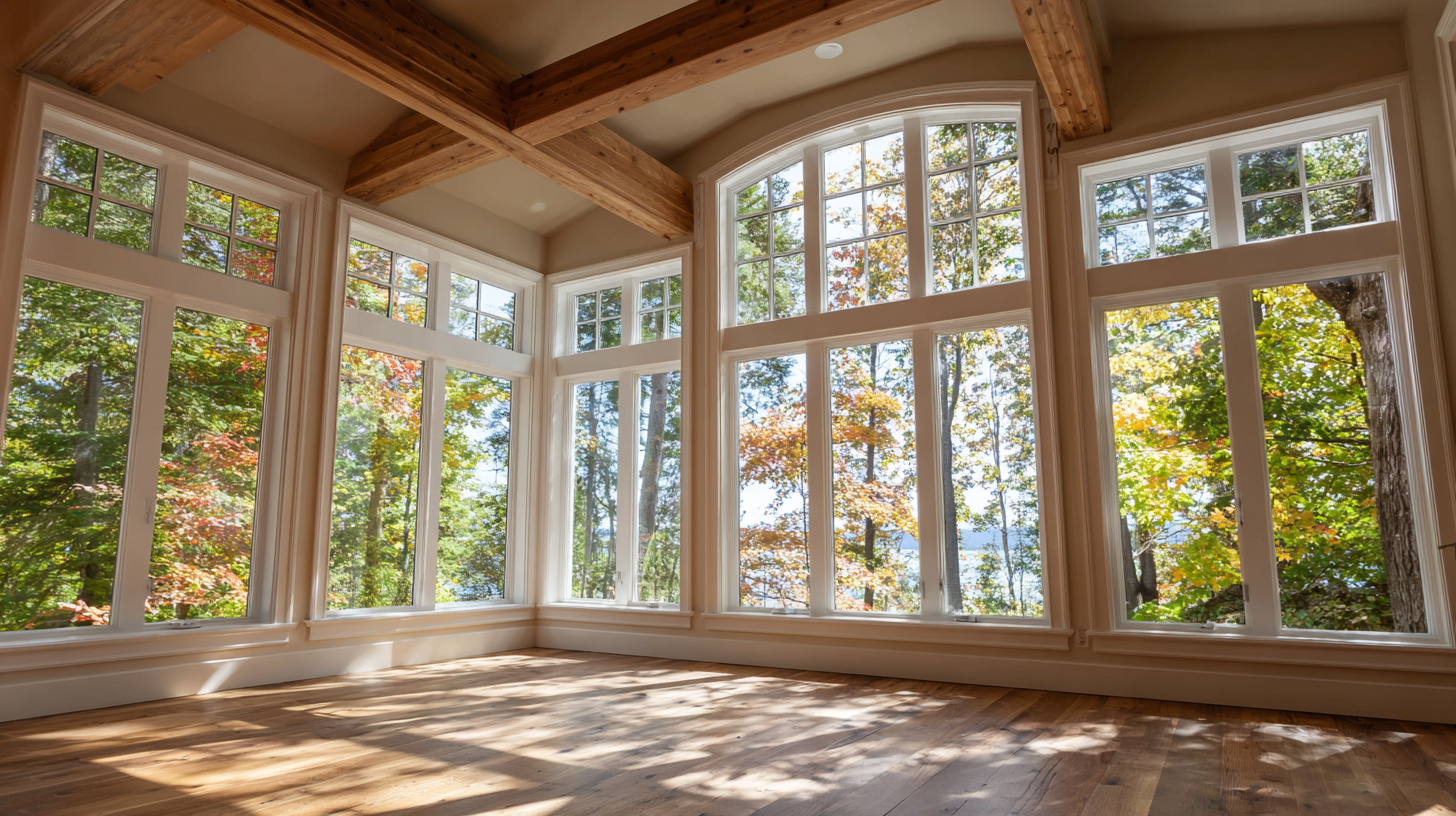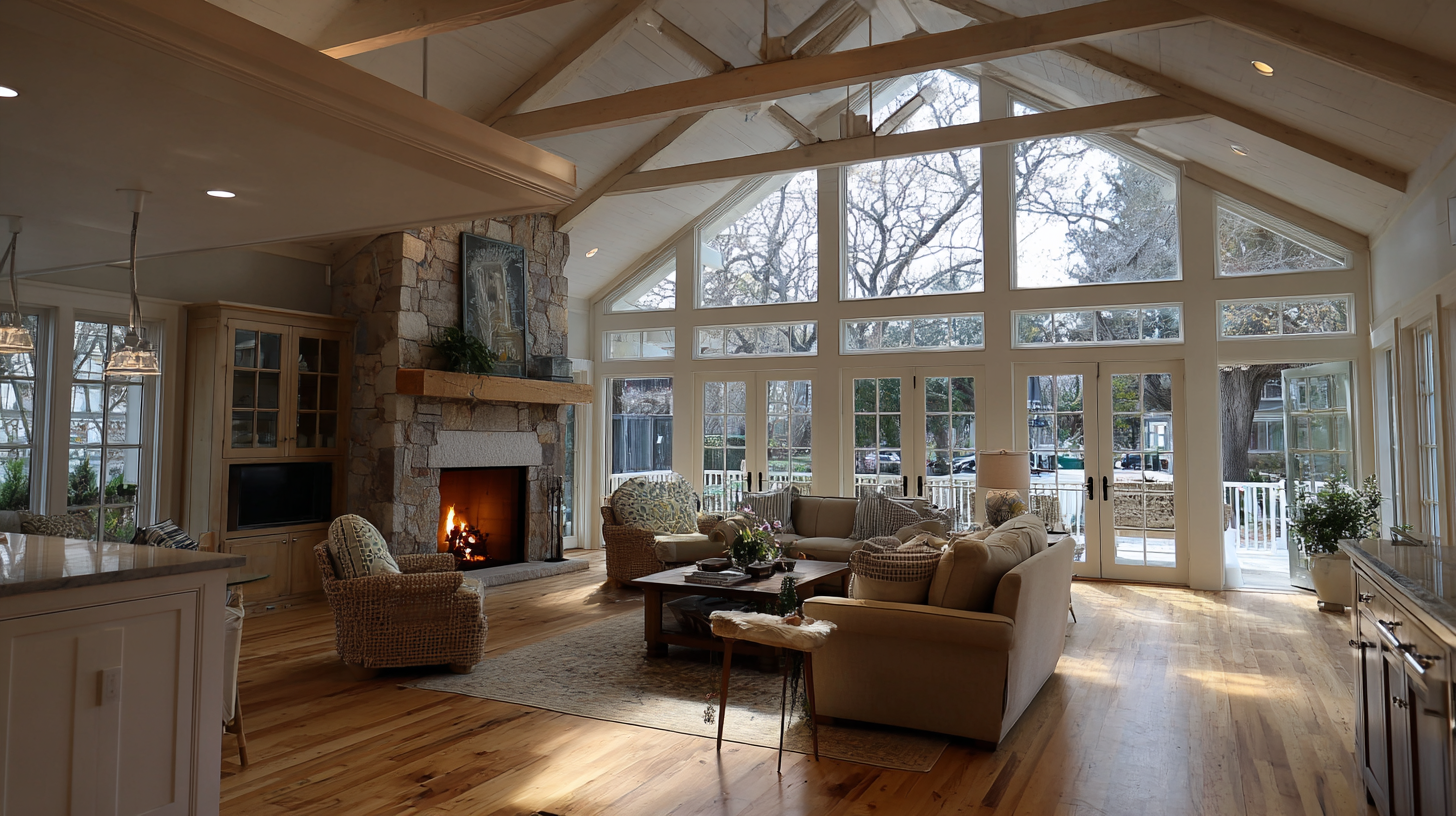Blog
How Large Windows Transform Natural Light and Improve Indoor Air Quality
The integration of large windows into modern architectural design has become increasingly prominent, not only for aesthetic appeal but also for significant ecological and health benefits. Studies indicate that natural light exposure can enhance productivity by up to 15%, as reported by the American Society of Interior Designers (ASID). Furthermore, large windows play a crucial role in improving indoor air quality, as they facilitate better ventilation and reduce reliance on artificial lighting and heating systems. According to research from the National Renewable Energy Laboratory (NREL), buildings with abundant natural light and proper ventilation can see a reduction in energy consumption by approximately 30%. Additionally, enhanced natural light helps regulate circadian rhythms, potentially leading to improved well-being among occupants. Hence, the incorporation of large windows is not merely a stylistic choice but a strategic approach to fostering healthier, more sustainable living environments.

The Impact of Large Windows on Indoor Air Quality: Key Statistics and Findings
Large windows significantly enhance indoor air quality by allowing ample natural light to penetrate spaces, which not only brightens environments but also encourages better ventilation. The integration of large windows can facilitate the flow of fresh outdoor air while diluting indoor pollutants, a critical factor given that research indicates a substantial correlation between air quality and mental health outcomes, such as depression. Negative impacts of both outdoor and indoor air pollutants have been highlighted, particularly among vulnerable populations like middle-aged and older adults.
Moreover, lessons learned from the COVID-19 pandemic emphasize the importance of ventilation in maintaining safe indoor environments. Effective ventilation strategies, including the use of large windows, can limit the buildup of airborne contaminants, contributing to improved thermal comfort and overall health. In educational settings, for instance, well-designed window placements in arid climates have been shown to enhance both air quality and students' well-being. Therefore, the design and orientation of windows play a vital role in promoting healthier indoor spaces, aligning with the ongoing focus on combating air pollution challenges in urban environments.
Understanding Natural Light: How Window Size Influences Daylight Exposure Levels
 The importance of natural light in indoor environments cannot be overstated, with various studies highlighting how window size significantly affects daylight exposure levels. According to a report by the International Journal of Indoor Environment and Health, larger windows can enhance the amount of natural light that enters a space by up to 50%, leading to a more vibrant and inviting atmosphere. This increase in daylight exposure not only improves the aesthetic of a room but also has been linked to increased productivity and overall well-being among occupants.
The importance of natural light in indoor environments cannot be overstated, with various studies highlighting how window size significantly affects daylight exposure levels. According to a report by the International Journal of Indoor Environment and Health, larger windows can enhance the amount of natural light that enters a space by up to 50%, leading to a more vibrant and inviting atmosphere. This increase in daylight exposure not only improves the aesthetic of a room but also has been linked to increased productivity and overall well-being among occupants.
Furthermore, the connection between natural light and indoor air quality is profound. A study conducted by the American Society of Heating, Refrigerating and Air-Conditioning Engineers (ASHRAE) found that spaces with adequate daylight, enabled through larger windows, tend to have better ventilation rates, which helps in reducing indoor pollutants. This improvement in air quality is crucial, as it has been shown that higher air quality can decrease absenteeism in workplaces by as much as 30%. Therefore, considering the size of windows in both residential and commercial design is essential for enhancing both natural light availability and indoor air quality.
Optimizing Window Design: Balancing Aesthetics and Indoor Air Efficiency
The design of windows plays a crucial role in balancing aesthetics and indoor air efficiency.
Large windows not only serve as a visual connection to the outdoors but also enhance the inflow of natural light,
which has been shown to improve mood and productivity.
When optimizing window design, considerations such as size, orientation, and placement are paramount.
For instance, strategically placed windows can harness sunlight while minimizing glare, creating an inviting atmosphere
without compromising comfort.
In terms of air quality, larger windows can facilitate better ventilation, which is essential for reducing indoor pollutants.
They allow for the effective cross-ventilation of air, promoting a healthier environment.
Utilizing materials and technologies such as low-emissivity glass
can further enhance their efficiency by regulating indoor temperatures,
thereby reducing reliance on artificial heating and cooling systems.
Therefore, integrating thoughtful design principles can lead to an indoor space that is not only visually appealing but also supports
well-being through improved air quality and natural light.
The Benefits of Enhanced Ventilation Through Larger Window Installations
Larger windows play a crucial role in enhancing indoor ventilation, significantly improving air quality within living and working spaces. By increasing the influx of fresh air, these expansive windows allow for better air circulation, helping to dilute indoor pollutants, allergens, and moisture. As a result, occupants benefit from a healthier environment that can reduce the risk of respiratory issues and other health concerns linked to poor air quality.

Furthermore, larger windows not only facilitate improved ventilation but also create a seamless connection with the outdoors. This visual link encourages occupants to engage with their environment, which can further promote well-being and productivity. When combined with proper window design that allows for easy opening and closing, these installations create dynamic spaces that adapt to changing weather conditions and the needs of the residents, thus maximizing both comfort and air quality throughout the year.
Statistical Correlation Between Natural Light and Employee Productivity Metrics
Large windows are a powerful tool in modern office design, significantly enhancing natural light in workspaces.
Research shows a clear statistical correlation between natural light exposure and employee productivity metrics.
Employees working in environments with ample natural light tend to report higher levels of engagement and job satisfaction.
This increased exposure to daylight positively influences mood, cognitive function, and overall mental well-being,
which in turn boosts productivity.
Tips for Enhancing Workplace Natural Light:
- Maximize window space in office layouts to allow more sunlight in.
- Use light-colored walls and reflective surfaces to amplify natural light throughout the space.
- Consider open floor plans that reduce barriers and enhance light flow.
The shift towards remote work has underscored the importance of light exposure behaviors, influencing mood, memory, and sleep quality. Organizations that thoughtfully integrate abundant natural light into their work environments are not just improving air quality but also fostering a productive workforce. Engaged employees, who feel good in their workspaces, are invaluable to any business aiming for success.
Tips for Remote Workers:
- If working from home, arrange your workspace near windows to maximize sunlight exposure.
- Incorporate plants that thrive in low light to enhance your environment's aesthetics and air quality.
- Take breaks outdoors to refresh and reset your mental focus.

